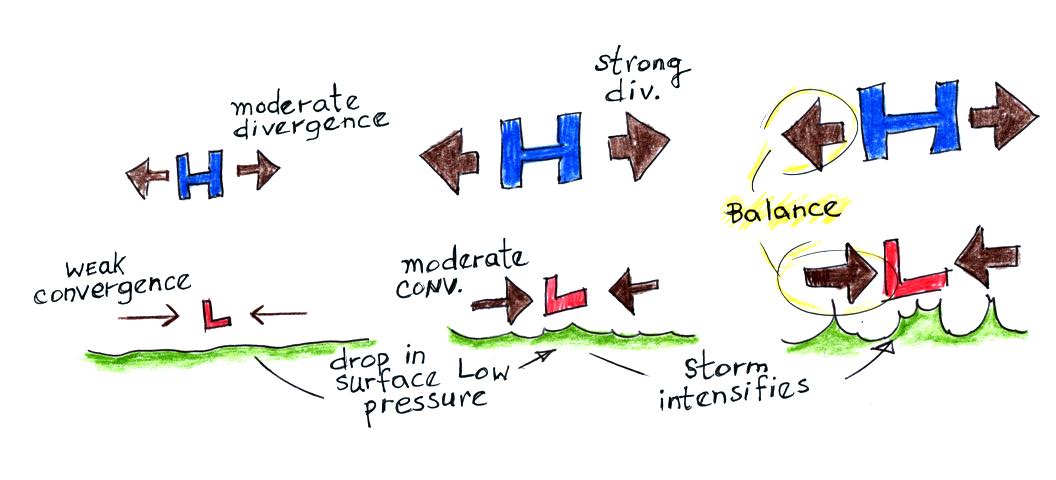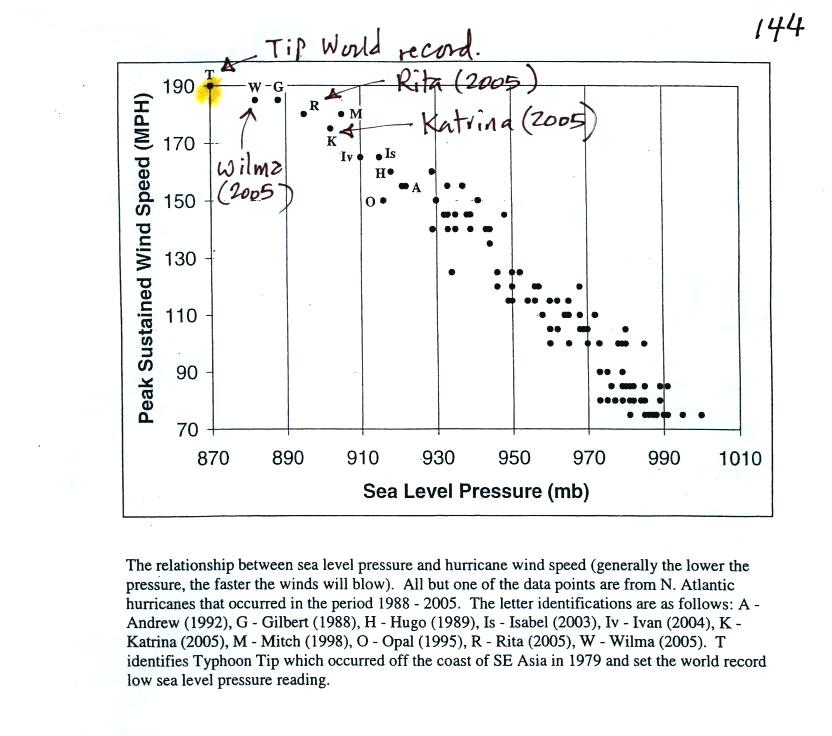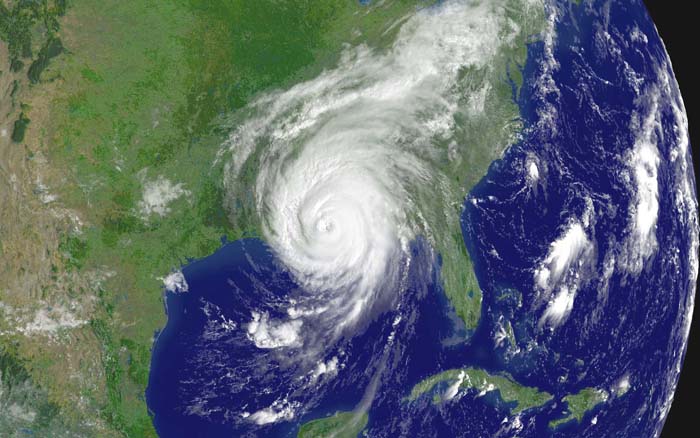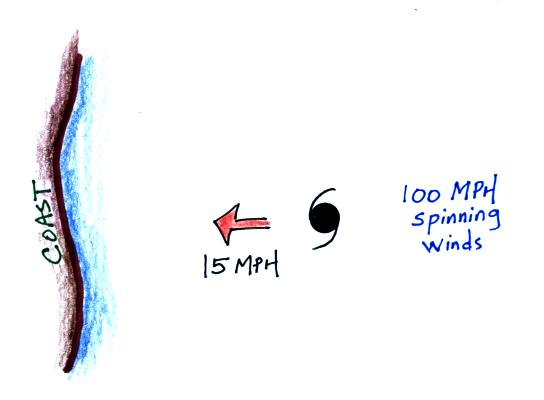



| Year |
Deaths |
Total
Damage
(billion $ )) |
| 2000 |
0 |
<
1 |
| 2001 |
24 |
6.5
B |
| 2002 |
51 |
1.7
B |
| 2003 |
14 |
2.3
B |
| 2004 |
34 |
22.9
B |
| 2005 |
1016 |
107.5
B |
| 2006 |
0 |
<
1 |
| 2007 |
1 |
<
1 |
| 2008 |
11 |
7.9
B |
| 2009 |
2 |
<
1 |
| 2010 |
0 |
<
1 |
 |
 |
 |
 |
| Similarities |
| both types of storms
have low pressure centers (the term cyclone refers to winds blowing around low pressure) |
| upper level divergence
is what causes both types of storms to intensify (intensification means the surface low pressure gets even lower) |
| Differences
(the order may differ from that given in class) |
|
| 1. Middle latitude
storms are bigger, 1000 or 2000 km in diameter (half the US) |
1. Hurricanes are
smaller, a few 100s of km in diameter (fill the Gulf of Mexico) |
| 2. Formation can occur
over land or water |
2. Can only form over
warm ocean water weaken rapidly when they move over land or cold water |
| 3. Form at middle (30o
to 60o) latitudes |
3. Form in the sub
tropics, 5o to 20o latitude |
| 4. Prevailing westerlies
move these storms from west to east |
4. Trade winds move
hurricanes from east to west |
| 5. Storm season: late
fall and winter (strong thunderstorms and
tornadoes in early spring) |
5. Storm season: late
summer to fall (when ocean water is warmest) |
| 6. Air masses of
different temperatures collide along fronts |
6. Single warm moist air
mass |
| 7. All types of
precipitation: rain, snow, sleet, freezing rain |
7. Mostly just lots (a
foot or more) of rain |
| 8. Only an occasional
storm gets a name ("The Perfect Storm", "Storm of the Century", etc.) |
8. Tropical storms &
hurricanes all get names (determined by an
international committee of some kind) |

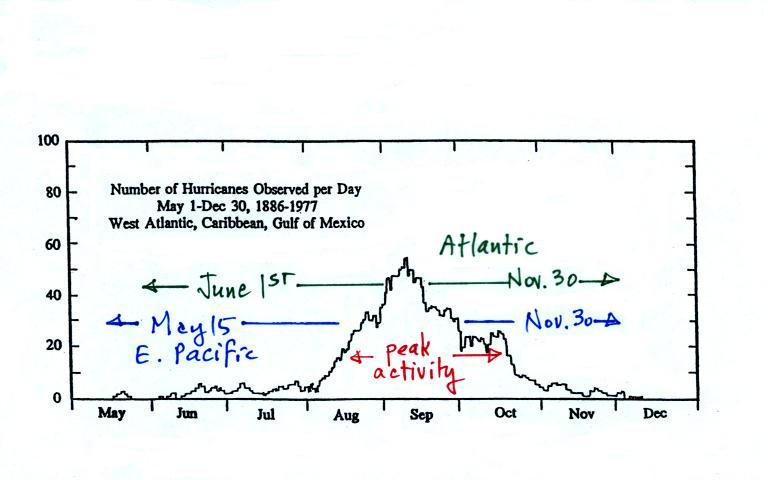


| Normal hurricane activity in the Pacific | Normal hurricane activity in the Atlantic |
| 16
tropical storms per year 8 reach hurricane strength 0 hit the US coastline |
10
tropical storms per year 6 reach hurricane strength 2 hit the US coastline |

